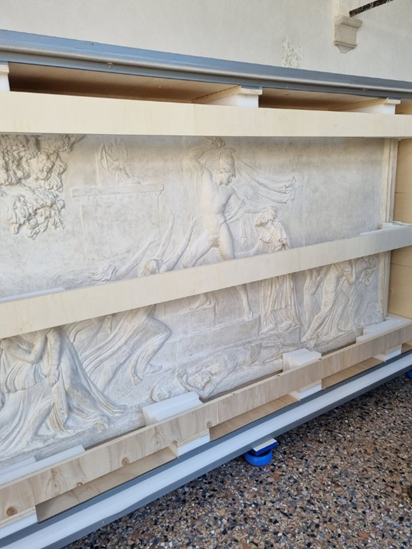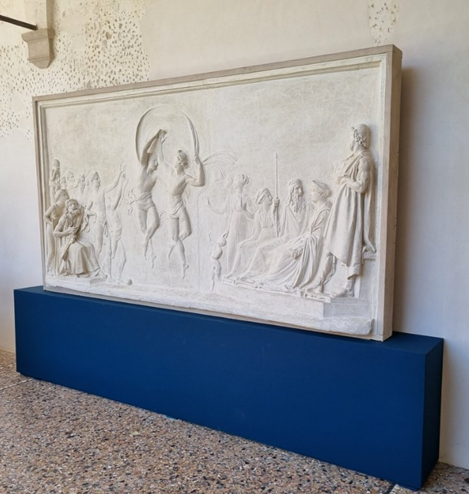Plaster casts by Canova on show for the first time at the Bailo Museum in Treviso
20 May 2022
The two bas-reliefs of Generali’s art collection are being exhibited with 200 other works
The precious plaster casts by Antonio Canova, part of the Generali collection, left the Trieste headquarters for the first time heading for Treviso, to be shown in the public exhibition Canova gloria trevigiana: dalla bellezza classica all’annuncio romantico (Canova Glory of Treviso: from Classical Beauty to Romantic Dawn”) from 14 May to 25 September 2022.
It’s a unique opportunity to admire the great Treviso master’s two works, which are not usually accessible to the public as they normally reside in Palazzo Stratti, Trieste. In the words of Giuseppe Pavanello, internationally most renowned Canova expert, the recently restored plaster bas-reliefs were part of what can be seen as a serial production, “and in this too Canova reveals traits that help to identify him as the first modern artist“.
These are two large works (141 x 280 cm) of considerable weight (300 kg each) depicting two very different subjects taken from the Aeneid and the Odyssey respectively. The first – produced between 1787 and 1790, depicts “The Death of Priam”, and the second, dated to the following two years, “The Dance of the sons of Alcinous”.
The “The Death of Priam” represents the episode described in the second canto of Virgil’s Aeneid. Canova shows Achilles’ son Pyrrhus in the centre, seizing the old king of Troy by the hair and preparing to kill him despite the efforts of two women to restrain him. On the left we see the aged Hecuba in a faint, supported by a handmaid, and on the right Priam’s daughter Cassandra, her arms raised imploringly skywards, and Hector’s widow Andromache, hiding her little son Astyanax in her arms to protect him. The presence in the foreground of the naked body of another of Priam’s sons, the young Polites, foretells the story’s ending.
The scene in “The Dance of the sons of Alcinous” is inspired by the eighth canto of Homer’s Odyssey. In the centre Halios and Laodamas, sons of Alcinous, king of the Phaeacians, are dancing while holding aloft a veil that arcs over them. They dance to music played on the zither by the blind Demodocus seated on the left behind a group of celebrating figures, while on the opposite side Alcinous is shown sitting on the throne with his wife Arete and his daughter Nausicaa on either side as he gazes at Ulysses standing on the far right.
Canova created the works using motherforms, moulds whose internal contours determine the external form of the plaster casts that emerge from them.
The exhibition is curated by Fabrizio Malachin, Giuseppe Pavanello and Nico Stringa.






